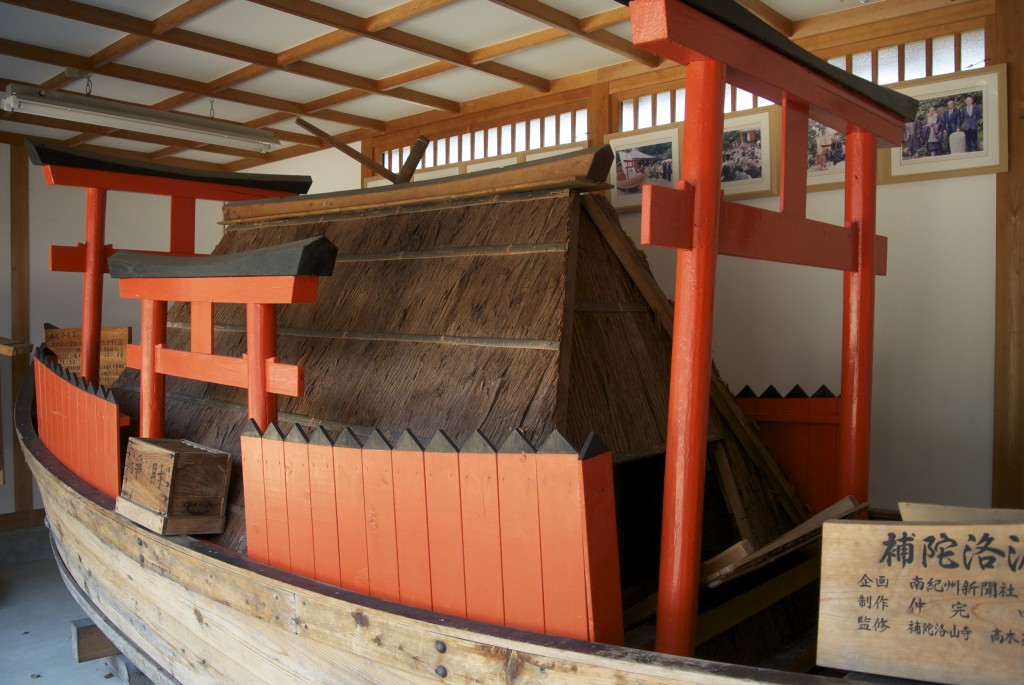
Model of the vessel in which monks sailed off into the Pacific, never to return
Those who have read The Catalpa Bow will know of the notion that paradise lay on the far side of the sea. For medieval believers, the idea was that Kannon’s island paradise called Mt Furdaraku (or Potala in Sanskrit) lay off to the south across the sea. For some Buddhists it was such a reality that they built small boats to set off for it. They never returned… The purpose of the sacrificial suicide was to help others by delivering their entreaties and petitions.
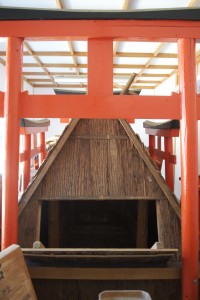
Opening to the coffin-like room on the ship where monks prepared themselves to die in expectation of awakening in Kannon's Pure Land
From Heian to Edo times it’s estimated that some twenty monks in all sailed away in this manner. The base for their suicidal mission was Furdarakusan Temple, one of Kumano’s World Heritage sites. It stands near the coast and is said to have been founded, like Seiganto-ji, by a monk from India called Ragyō Shōnin.
Shonin means holy man, and Ragyo supposedly came in the fourth century, which is at odds with the historical account that Buddhism arrived inl the sixth century. So maybe he came and people didn’t realise what he’d brought. Or he brought Hiniduism. Or he came after the sixth century. Or perhaps he was just a figment of someone’s imagination!! [see comment below.]
Fudarakusan-ji is representative of the deeply syncretic beliefs of the past, and there is a shrine adjacent to the Tendai temple that was part of the same complex. From the time of Saicho and Kukai, founders of Tendai and Shingon, kami were seen as the spirits of place which protected localities.
There later developed a notion that the kami were Japanese avatars (gongen) of the more universal Buddhas. In this respect it’s interesting that the devout priests of Fudarakusan-ji, deeply convinced of the reality of Kannon, should set off in boats with torii rather than some Buddhist symbol.
I’m reminded here of the Daimonji festival at Kyoto, when for the midsummer Obon festival the spirits of the dead are sent off by fires lit on the surrounding hills. As well as Buddhist symbols, there is a boat and a torii. One of them transports the dead to the other world, the other marks the divide between the two worlds.
It’s often said that Shinto has a taboo on death, though it is characterised by cultivation of the spirit of the dead. Ancestor worship lies at its core. Go to Koyasan and you’ll find torii throughout the magnificent cemetery there. Visit imperial tombs and you’ll often find torii at their entrance. What’s more, there are several shrines built near graves: Sarutahiko, for example, is supposedly buried at Tsubaki Shrine in Mie. There are too special Shinto burial rites.
Religion it is said was prompted by mankind’s fear of death. In the Shinto worldview we join the realm of the kami after death, merging eventually into one great kamihood like individual droplets of water merging into the sea. As we sail away at the end of life, it may be a comforting thought. Perhaps it was too for the monks of Fudarakusan-ji.
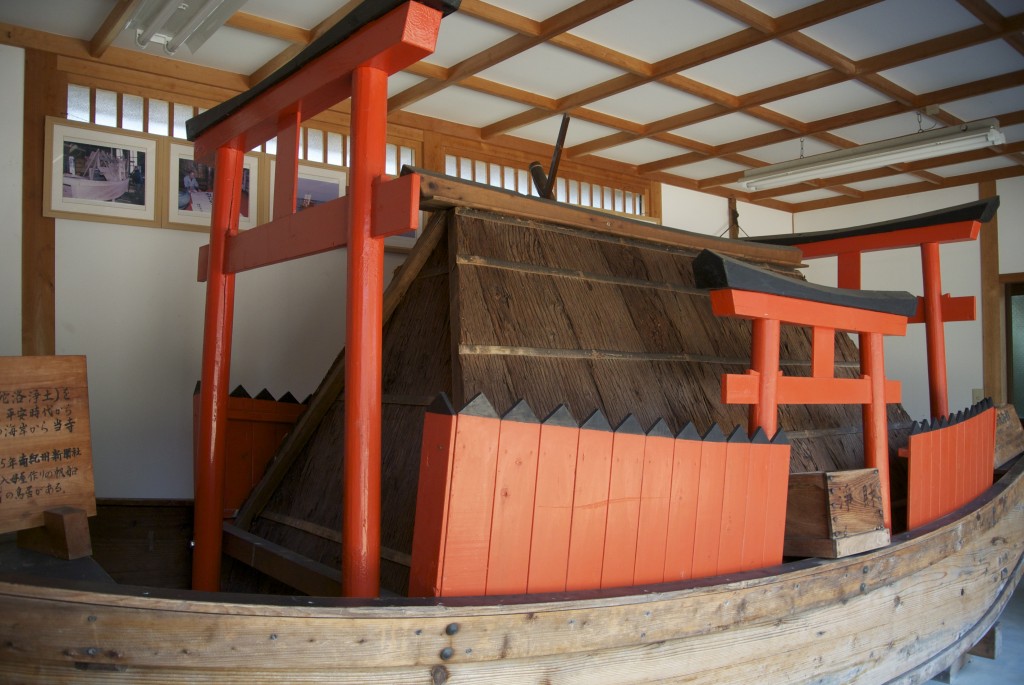
With no food supplies, the monks knew their time would soon end
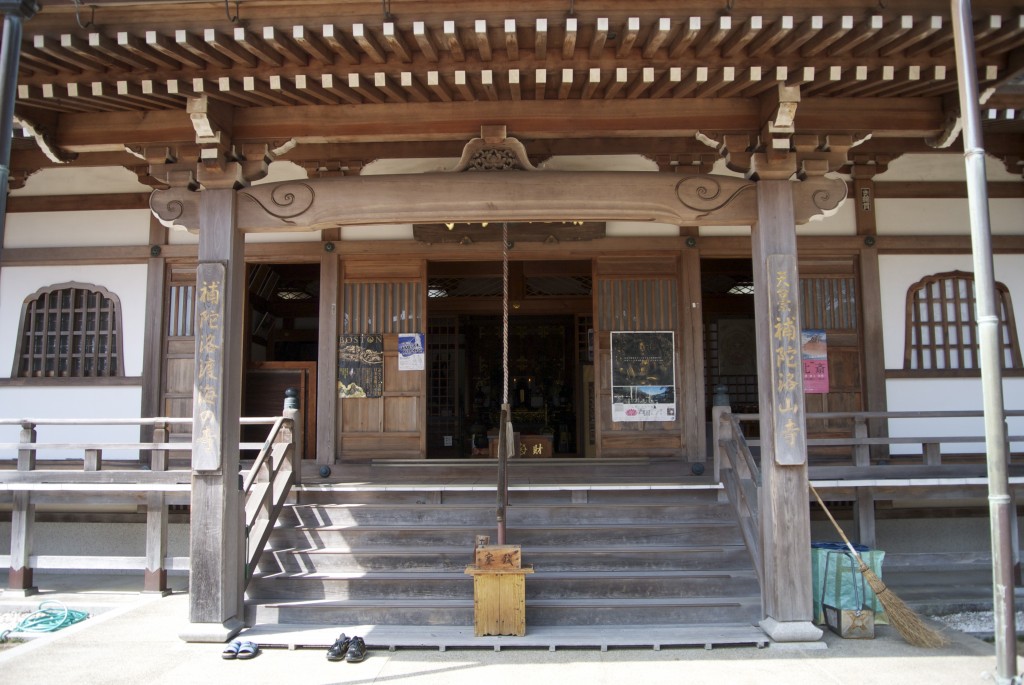
The modest exterior of the World Heritage temple
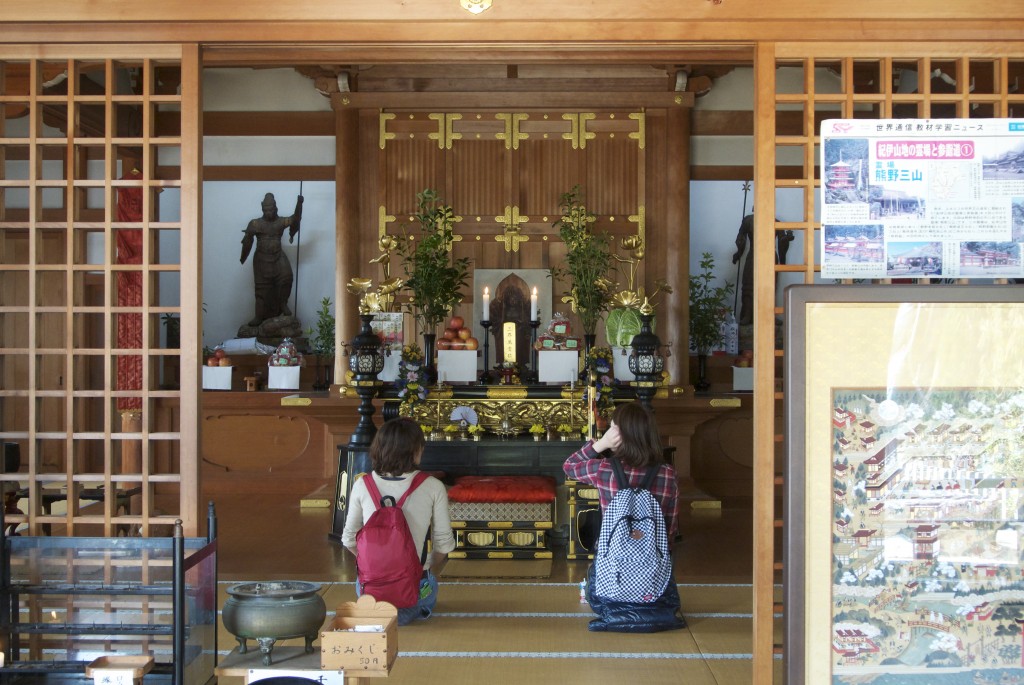
Two modern-day visitors paying respects to the past
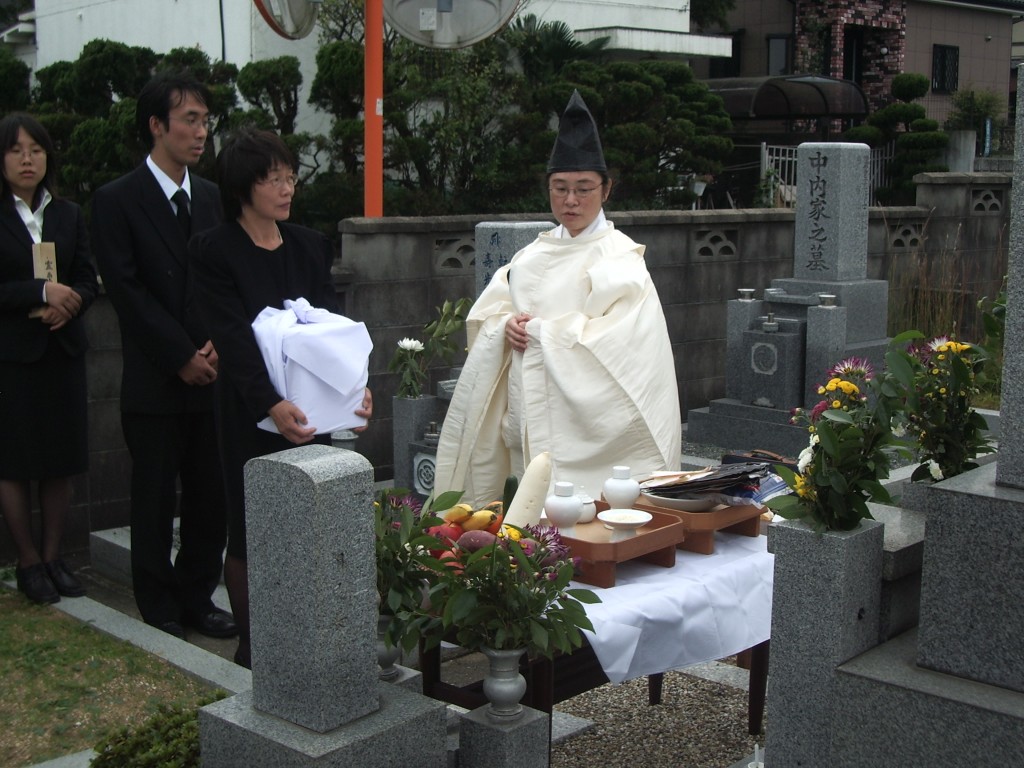
Example of a Shinto burial rite

A.J. Dickinson has written with an interesting take on the Indian connection:
As to “RagyuShonin”
Maybe he did come then
From India with the trade
Between India/China/Japan
Handled by the Malaysian
Sea power SriVijaya kingdom
(Or it’s predecessors)
With S&SE Asia’s then syncretic
TantricBuddhismHinduism mix
As seen today in ruins
And in reality on Bali on Java
Maybe that lone holyMan
Did come here on trading winds
Honored respected locally
In the way & the means
of that place & time
In old KamiLand
Organized Buddhism itself
Not moving in with power &
State protection ’til centuries later
Would fit the historical MO
But huWhoKnowZ?